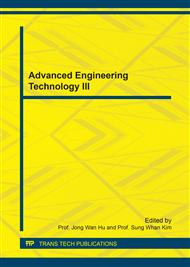p.175
p.181
p.188
p.192
p.200
p.206
p.212
p.217
p.224
A Study on the Analysis of Airtightness Performance of Dilapidated Dwelling According to the Application of Windbreak
Abstract:
The airtightness performance of dilapidated dwellings is low. Infiltration occurs due to such low airtightness performance, causing the energy loss. Energy loss due to infiltration accounts for more than 30% of total energy loss in a building. Therefore, the airtightness performance should be considered by priority when retrofit of dilapidated dwelling is carried out. To improve the airtightness performance, numerous studies are underway. As a result, various products have been developed. The purpose of this study is to evaluate the performance of windbreak for improving the airtightness performance of dwelling and analyze the improvement level of airtightness performance of the room quantitatively after the windbreak is actually applied to dilapidated dwelling. In order to measure the airtightness performance of window where windbreak was applied, we measured the airtightness performance of window before and after windbreak was applied. Also, for the field performance evaluation, 27 dwellings were selected to measure the airtightness performance of the windbreak applied room. The measurement result showed that the infiltration rate of window where windbreak was applied decreased by approximately 48.66% in comparison to that before the windbreak was applied. And, The ACH50 (Air Change per Hour at 50 pascals of pressure) of the room where the windbreak was applied decreased by approximately 31.61%, confirming that the airtightness performance of window was improved through the application of windbreak.
Info:
Periodical:
Pages:
200-205
Citation:
Online since:
June 2017
Authors:
Price:
Сopyright:
© 2017 Trans Tech Publications Ltd. All Rights Reserved
Share:
Citation:


